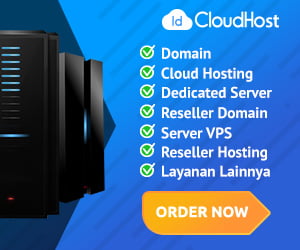Safe Link Converter
Made your link safe to visit.
How to use our tool:
- Click on How To Use menu above.
- Click on the code and CTRL + C on your keyboard.
- Paste the code in your HTML blog theme before the </body>.
- Save your HTML blog theme. you are done!
- Now, your blog's outbound links was encrypted!
IoT Device Management: Back to Basics - IoT device control is essential for a solid IoT solution. As a matter of fact, most cloud providers use this system for their platforms. In fact, many giant companies including Google, Microsoft and Amazon use them. In this article, we are going to talk about this system and why it's so important.
1. Authentication and Provisioning
Before you install an IoT device, make sure it's trusted and secure. In other words, the device should be genuine, and run trusted software. Basically, provisioning is the enrollment process of a device and authentication is the verification process.
2. Control and Configuration
All types of device need to be configured and controlled when they are installed for the first time. For instance, if you install a tracker on your vehicle, you will need to configure it first.
Therefore, the ability to control and configure a device after deployment is quite important to ensure proper performance, functionality and protection. Aside from this, you should be able to reset the devices to their default configuration.
3. Monitoring and Diagnostics
Apart from configuration, you should also be able to fix operational issues and other software bugs. However, you should be able to identify the bugs first. And for this purpose, it's important that you monitor the system on a regular basis. This is a must for proper diagnosis. Almost all device management programs feature program logs for diagnosis.
4. Software Updates and Maintenance
If you can identify bugs or security flaws in a device, make sure you update the device software or firmware. Since there can be thousands of devices, making updates manually may not be feasible. Therefore, your device management software should be able to update automatically.
The Beginning of IoT Device Management
Many IoT solution providers didn't prefer IoT device management first. However, as these functionalities became more important, almost all big cloud providers, such as Amazon, Microsoft and Google started using primary IoT Device management. However, it's important to keep in mind that basic IoT device management can't meet all business needs.
Why we need more than the Basics
In IT departments, device management started as the management of computing resources in the organizations. However, it progressed with the advent of smartphones that stressed the importance of mobile device management. Today, you can find tons of devices in just one IoT solution.
In the past, device management approaches revolved around the presumption that device connectivity must be stable and persistent. For instance, the diagnosis and monitoring section in a system may point to downloaded program logs and CPU usage. However, in case of IoT, these solutions involve a lot of devices for high bandwidth and persistent connectivity.
Based on the application, IoT solutions vary considerably. Some of the solutions require persistent connectivity and high bandwidth, while others don't have this requirement. For instance, agricultural IoT applications use tons of sensors like equipment asset, sunlight, soil moisture, and temperature trackers. For these sensors, long battery life is of paramount importance.
So, this was an introduction to IoT device control and management. Hope, you will find this article useful and informative.
For IoT device control and remote SSH, we suggest that you check out RemoteIoT. This resource will provide you with you plenty of useful content.
Article Source: http://EzineArticles.com/10253075
